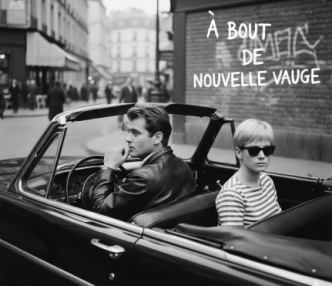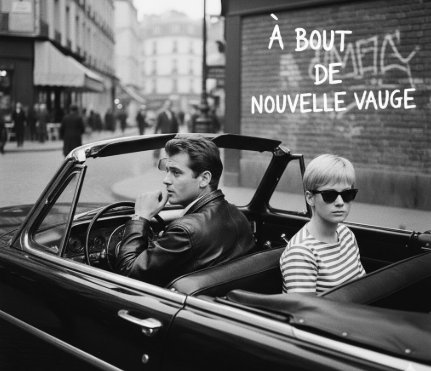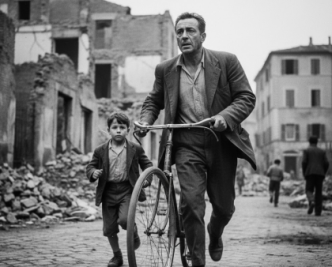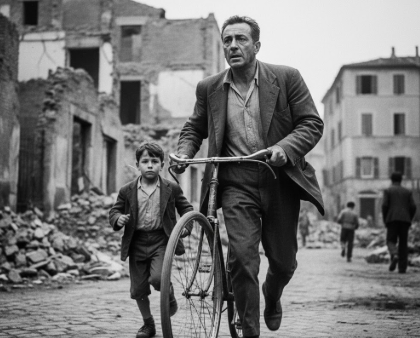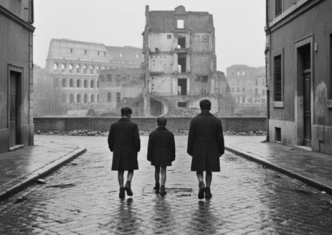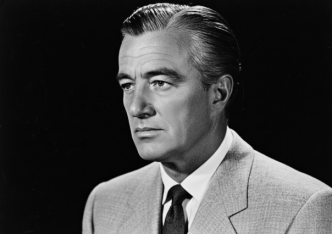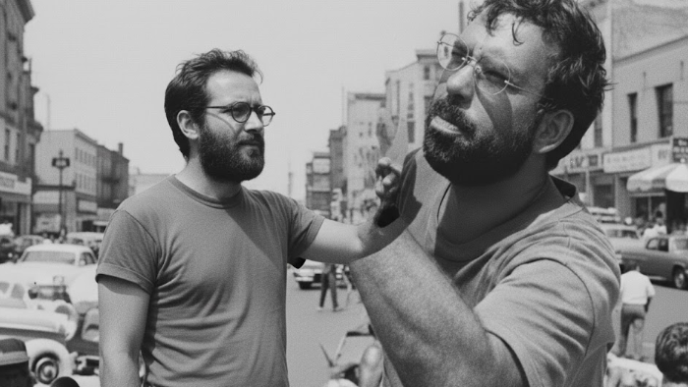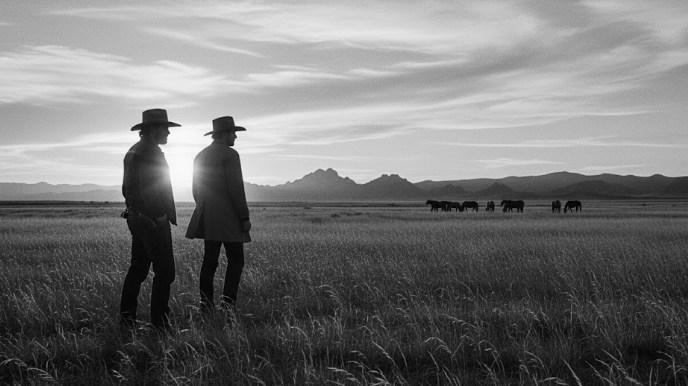In 1960, a cinematic grenade was thrown into the polished world of international filmmaking. That grenade was À bout de souffle (Breathless), the debut feature from a brash young critic-turned-director named Jean-Luc Godard. More than just a film, it was a manifesto in motion, a declaration of war on the “cinema of quality” that had dominated France for decades.
With its restless handheld camera, jarring edits, and coolly detached anti-hero, Breathless did not just break the rules of cinema; it threw them out the window, ran them over with a stolen car, and never looked back. It was the cinematic earthquake that announced the arrival of the French New Wave, a movement that would liberate filmmaking and inspire generations of directors to view the camera not as a tool for recording stories, but as a pen for writing them.

From Critic to Creator: The Mind Behind the Mayhem
Before he was a filmmaker, Jean-Luc Godard was one of the most truculent and brilliant critics at the influential journal Cahiers du Cinéma. Alongside future New Wave directors like François Truffaut and Éric Rohmer, Godard championed the “auteur theory,” the radical idea that a director was the true “author” of a film, imprinting their personal vision onto every frame. They revered American directors like Alfred Hitchcock and Orson Welles, who they saw as true artists working within the studio system, and they railed against the impersonal, literary adaptations of “papa’s cinema” in their own country. Breathless was Godard’s chance to put his theories into practice, to create a film that was unapologetically the product of a singular artistic vision.
Deconstructing the Gangster Film
On the surface, Breathless has the setup of a classic American film noir. It follows Michel (Jean-Paul Belmondo), a charismatic but amoral small-time criminal who, after impulsively killing a police officer, hides out in Paris with his American girlfriend, Patricia (Jean Seberg). But Godard was not interested in telling a conventional crime story. The plot is secondary, a loose framework for a series of philosophical conversations, spontaneous encounters, and stylistic experiments.
Michel is a walking homage to American cinema; he models his persona on Humphrey Bogart, constantly mimicking the actor’s signature lip-rubbing gesture. Yet, he is a hollow imitation, a character who has adopted the style of the gangster archetype without any of its substance. He is a drifter, an existential anti-hero who acts on impulse and lives for the moment, embodying the alienation and rebellion of a post-war generation. The film’s narrative is as restless and fragmented as its protagonist, abandoning logical causality for an episodic structure that captures the messy, unpredictable texture of modern life.
The Grammar of Anarchy: Jump Cuts and Visual Disruption
The most revolutionary and famous aspect of Breathless is its editing. Godard deliberately employed the “jump cut,” a technique where he would cut out the middle of a single, continuous shot, causing the image to jarringly “jump” forward in time. This was a direct assault on the “invisible” continuity editing of classical Hollywood, which was designed to immerse the viewer in the story. Godard’s jump cuts do the opposite: they disrupt the flow, create a sense of nervous energy, and constantly remind the audience that they are watching a film—a constructed piece of art.
This rebellious aesthetic was born partly from necessity. Working with a shoestring budget, Godard and his cinematographer, Raoul Coutard, took to the streets of Paris with lightweight handheld cameras, often shooting from a wheelchair for tracking shots. They used natural light and recorded sound directly on location, giving the film a raw, documentary-like immediacy. What began as a low-budget solution became a stylistic signature, a way of capturing life as it was actually lived, not as it was staged in a studio.
A Philosophy on Film: Existentialism and Self-Awareness
Beneath its cool, stylish surface, Breathless is a deeply philosophical film, steeped in the existentialist themes that were prevalent in post-war France. Its characters are adrift, grappling with questions of identity, freedom, and the absurdity of existence in a world without inherent meaning. The film is also intensely self-aware. Characters break the fourth wall to address the audience directly, and the script is filled with references to other films, blurring the line between fiction and reality. Godard was not just telling a story; he was having a conversation about cinema itself, challenging the viewer to be an active participant rather than a passive consumer.
Conclusion: A Cinematic Revolution
Breathless was a cultural phenomenon. Its commercial and critical success proved that personal, low-budget films could find a massive audience, and it opened the floodgates for the French New Wave to flourish. Its influence is immeasurable, inspiring the filmmakers of the New Hollywood movement, like Martin Scorsese and Quentin Tarantino, and every independent director who has since picked up a camera to tell a personal story outside the studio system. Jean-Luc Godard’s debut was a bolt of lightning that tore down the old temple of cinema, and in its place, built something new, daring, and unapologetically modern.

Dario Loce is the founder and editor of Celebrimous. He is a lifelong film enthusiast and the author of several locally-published books on cinema history and analysis. His passion is deconstructing the “how” and “why” of filmmaking, from the director’s vision to the editor’s cut. When not lost in a classic film, he’s usually walking through the city, replaying scenes in his mind like unfinished stories.
